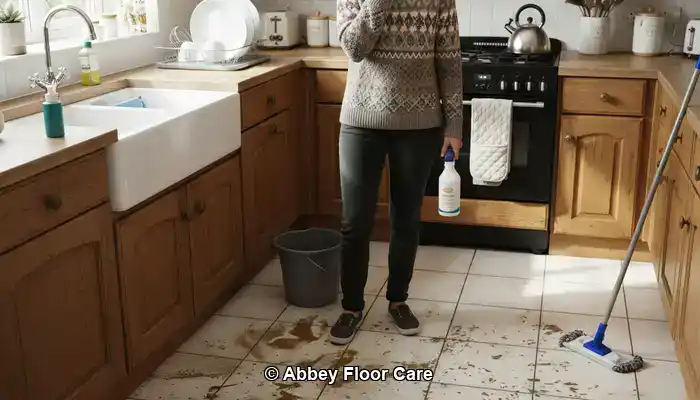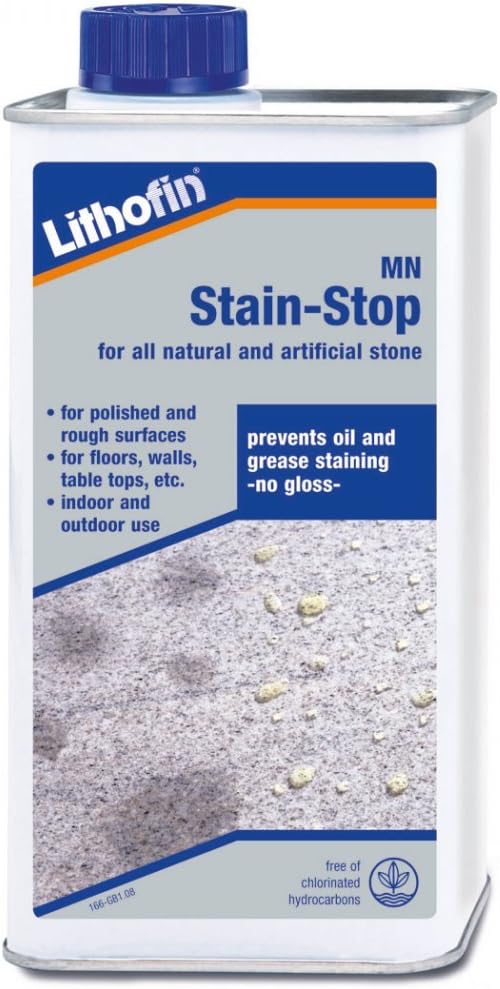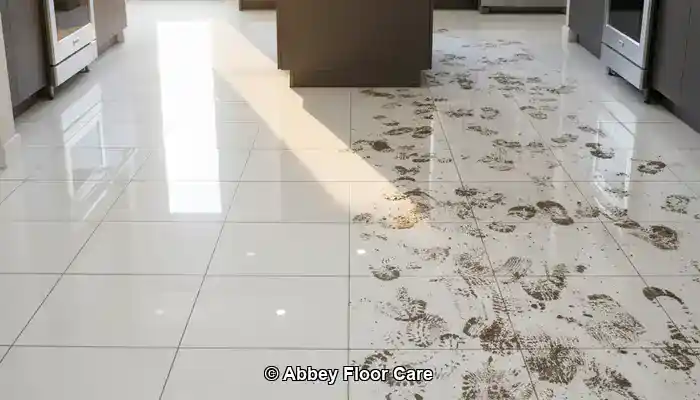
Last Updated on November 8, 2025 by David
Essential Insights: Timely Resealing of Your Porcelain Tiles
- Porcelain tiles generally do not necessitate surface sealing; however, grout lines should undergo resealing every 1 to 2 years to avert staining and moisture absorption.
- Regions with high foot traffic, such as kitchens and hallways, require more frequent resealing in comparison to low-traffic areas like guest bathrooms.
- The water drop test serves as a straightforward method to evaluate the necessity of resealing; if water penetrates the tile or grout, it indicates that resealing is warranted.
- Selecting the appropriate sealer is crucial and is contingent on the type of tile and its location; penetrating sealers are optimal for unglazed porcelain and grout.
- Common pitfalls such as over-sealing, the use of harsh cleaners, or neglecting grout lines can diminish the effectiveness of resealing and potentially damage the floor.
Comprehensive Overview of Different Porcelain Tile Variants
Expert Recommendations: Top Products for Daily Grout Maintenance and Cleaning

Fila Pro Floor Cleaner
|

Lithofin MN Stain Stop
|

Vileda H2PrO Spin Mop System
|

Understanding the Differences: Comparing Glazed and Unglazed Porcelain Tiles
Porcelain tiles are available in two primary finishes: glazed and unglazed. Glazed porcelain features a protective coating that is baked onto its surface, significantly enhancing stain resistance and providing a broader spectrum of aesthetic options. In contrast, unglazed porcelain offers a natural, matte finish, often preferred for its slip resistance and exceptional durability in high-traffic environments. Although glazed tiles might not necessitate sealing, unglazed varieties, being more porous, benefit greatly from regular resealing to avert moisture absorption and staining over time.
Clarifying the Key Differences Between Ceramic and Porcelain Tiles
While ceramic and porcelain tiles are frequently mistaken for each other, they exhibit notable differences in density, water absorption, and overall durability. Porcelain tiles undergo firing at higher temperatures, resulting in a denser and less porous material in comparison to ceramic. This enhanced density makes porcelain particularly suitable for areas exposed to frequent moisture, such as kitchens and bathrooms. Recognising these distinctions is vital for homeowners to make informed choices regarding appropriate sealing schedules and suitable cleaning solutions.
Unpacking the Reasons Behind the Rising Popularity of Porcelain in UK Homes
Porcelain tiles have quickly become a preferred choice in UK homes due to their low-maintenance requirements and aesthetic adaptability, along with their compatibility with underfloor heating systems. Their capacity to replicate the appearance of natural stone or wood while offering superior durability makes them an attractive option for both contemporary and traditional interiors. Homeowners value porcelain tiles for their longevity, especially when complemented with appropriate sealing and maintenance practices.
 Grasping the Significance of Resealing for Prolonging Tile Longevity
Grasping the Significance of Resealing for Prolonging Tile Longevity
Recognising the Specific Needs of Grout and Tile Surfaces
While porcelain tiles typically exhibit low porosity, particularly when glazed, the grout lines are highly absorbent and susceptible to staining. Although the tile surface effectively resists moisture, the grout between tiles can easily absorb spills, dirt, and cleaning agents. Regular resealing establishes a protective barrier that safeguards grout from discolouration and degradation, particularly in high-moisture areas such as kitchens and bathrooms.
Enhancing Moisture Resistance and Minimising Stains
Resealing considerably boosts moisture resistance and diminishes the likelihood of stains penetrating porous areas. In high-traffic zones like hallways and utility rooms, consistent resealing helps preserve the floor's appearance while preventing long-term damage. Homeowners who commit to regular resealing can extend the lifespan of both the tiles and grout, particularly in areas frequently exposed to water or cleaning agents.
Preserving Visual Appeal and Improving Slip Resistance
Over time, unsealed or inadequately sealed tiles may lose their initial luster, appearing dull or uneven. Resealing assists in maintaining surface sheen and can enhance slip resistance when the correct product is used. This is especially crucial in bathrooms and entryways, where wet conditions elevate the risk of slips. A well-maintained seal contributes to both safety and aesthetic appeal.
Key Factors That Determine Resealing Frequency

How Foot Traffic and Room Usage Impact Resealing Needs
Areas with high foot traffic, such as hallways and kitchens, experience more wear and expose grout to elevated levels of dirt and moisture. Conversely, low-traffic spaces like guest bathrooms or spare bedrooms may require resealing less frequently. Homeowners should evaluate each room individually rather than applying a one-size-fits-all resealing schedule throughout the entire home.
The Effect of Cleaning Products on Surface Durability
Utilising harsh or acidic cleaning agents can accelerate the deterioration of sealers, especially in grout lines. Even products deemed safe for tiles can strip away protective layers when used excessively or diluted too much. Employing a gentle, pH-neutral cleaner helps to maintain the seal and reduce the need for premature resealing.
How Indoor Climate and Ventilation Influence Resealing Durability
Humidity levels and air circulation play a crucial role in how quickly grout and tile surfaces dry following cleaning. Poor ventilation can prolong moisture exposure, which may weaken sealers over time. Homes with adequate airflow and balanced humidity levels typically maintain sealed surfaces for longer, especially in bathrooms and utility areas.
Require Assistance with Your Tiles? Send us a quick message for practical advice.
How to Evaluate if Your Tiles Require Resealing
Spotting Indicators of Wear and Absorption in Your Tiles
Visible alterations in grout colour, heightened staining, or a lacklustre tile surface may suggest that the seal has weakened. In areas with heavy usage, this deterioration tends to occur gradually, making it easy to miss until dirt becomes more challenging to remove or moisture lingers post-cleaning.
Employing the Water Drop Test to Assess Seal Integrity
A simple yet effective method to evaluate seal integrity is the water drop test. By placing several drops of water on the tile and grout and observing their behaviour, you can ascertain the seal's effectiveness. If the water gets absorbed swiftly or leaves a dark mark, it indicates that resealing is necessary. This test is especially reliable on unglazed porcelain and grout lines, where porosity is inherently higher.
Identifying Signs of Dullness and Grout Discolouration
Tiles that appear chalky or demonstrate an uneven sheen likely signify a loss of their protective layer. Likewise, grout that darkens or displays patchy stains is often a clear indication that the seal has deteriorated. These visual indicators assist homeowners in deciding whether resealing is required, even if the floor seems clean.
Selecting the Optimal Sealer for Your Porcelain Floors
Understanding the Difference Between Penetrating and Surface Sealers
Penegrating sealers are designed to penetrate the tile and grout, creating a protective barrier without altering the surface appearance. These are particularly effective for unglazed porcelain and grout lines, providing moisture resistance while retaining a natural finish. In contrast, surface sealers create a visible layer that may enhance shine or texture. These are more commonly applied to decorative tiles but may also influence slip resistance if not chosen carefully.
Choosing Tile-Safe and Grout-Compatible Sealer Products
It is crucial to acknowledge that not all sealers are suitable for both tile and grout. Homeowners should seek products specifically labelled as safe for porcelain and compatible with cement-based grout. Using inappropriate types can result in hazing, residue accumulation, or diminished effectiveness. Carefully scrutinising product labels and ensuring adherence to UK safety standards can help secure enduring performance.
Exploring Eco-Friendly and Pet-Safe Sealer Alternatives
Numerous modern sealers are water-based and low in volatile organic compounds (VOCs), rendering them safer for indoor use. For homes with pets or children, opting for a non-toxic, eco-friendly sealer minimises exposure risks during application and drying. These products typically require shorter ventilation times and facilitate easier clean-up.
A Detailed Step-by-Step Guide to the Resealing Process
Preparing Surfaces and Cleaning Prior to Resealing
Before embarking on the resealing process, thoroughly clean the tile and grout using a pH-neutral cleaner. It is imperative to remove all surface dirt, oils, and residues to ensure that the sealer adheres effectively. Ensure that the floor is completely dry, as any moisture trapped beneath the sealer can lead to hazing or uneven coverage.
Utilising the Appropriate Application Tools and Techniques
Depending on the type of sealer and surface, use a soft applicator pad, microfibre cloth, or brush for application. Apply the sealer evenly across the tile and grout, working in manageable sections to prevent overlap marks. Follow the manufacturer's instructions regarding coverage rates and ensure that excess product does not pool in grout joints.
Understanding Drying Times and Ventilation Recommendations
Most sealers necessitate a drying time of 2 to 4 hours before allowing light foot traffic and may take up to 24 hours for complete curing. Open windows or employ fans to enhance airflow, particularly in confined spaces. Avoid wet cleaning or placing rugs on the surface until the seal has fully cured to prevent imprinting or stickiness.
Resealing Timelines Based on Room Type and Usage
Recommended Resealing Timelines for Kitchens, Bathrooms, and Hallways
Kitchens generally require resealing every 12 to 18 months due to frequent spills, cooking residues, and high foot traffic. Bathrooms may follow a similar schedule, particularly around showers and sinks where moisture exposure is significant. Hallways, contingent on usage, may necessitate resealing every 18 to 24 months to sustain grout protection and surface clarity.
Adjusting Resealing Frequency for Low-Traffic Versus High-Traffic Areas
In spaces with low traffic, such as guest bathrooms or spare bedrooms, resealing every 2 to 3 years may suffice. Conversely, high-traffic zones like entryways, kitchens, and utility rooms demand more frequent attention. Homeowners should tailor their resealing schedule based on the specific use of each area rather than adhering to a rigid timetable.
Seasonal Factors for Optimal Resealing Timing
Spring and early autumn present the most suitable opportunities for resealing floors in the UK, offering moderate temperatures and appropriate ventilation conditions. Avoid resealing during periods of high humidity or extreme cold, as these elements can adversely affect drying times and product performance. Planning resealing tasks around seasonal cleaning routines can enhance consistency and improve floor health.
Avoiding Common Pitfalls in the Resealing Process
Recognising the Dangers of Over-Sealing Your Tiles
Applying excessive sealer or resealing too frequently can result in surface buildup, hazing, or sticky residues. This issue is particularly prevalent with surface sealers that form a visible layer. Homeowners should strictly adhere to manufacturer guidelines and refrain from resealing unless the previous layer has worn down or failed.
Understanding the Impact of Using Harsh Cleaners Before Sealing
Utilising acidic or bleach-based cleaning agents can compromise the tile and grout, hindering the sealer's ability to bond effectively. Always clean with a pH-neutral product prior to resealing to ensure the surface remains safe and ready for treatment. Harsh chemicals may also leave residues that interfere with the sealer's effectiveness.
Emphasising the Importance of Addressing Grout Lines During Resealing
Grout, being the most vulnerable component of a tiled floor, is often overlooked during resealing. Neglecting grout lines can lead to uneven protection and increased staining. Use a small brush or targeted applicator to guarantee that grout receives thorough coverage, particularly in high-exposure areas such as kitchens and bathrooms.
Your Queries Addressed: Commonly Asked Questions Regarding Porcelain Tile Resealing
Can I Reseal My Tiles Myself?
Absolutely, many homeowners opt to reseal their porcelain tiles and grout independently using readily available products. The crucial element is to carefully adhere to the instructions, utilise tile-safe sealers, and ensure that the surface is clean and dry prior to application. DIY resealing is most effective in low-traffic areas or for routine maintenance.
How Can I Assess for Seal Failure?
The water drop test is a dependable method. By placing a few drops of water on the tile and grout and observing whether they bead or are soaked up, you can evaluate seal effectiveness. If the water absorbs quickly or leaves a dark stain, it suggests that the seal is likely compromised and that resealing is advisable.
Which Products Are Safe for Pets?
Seek out water-based sealers with low VOC content that are labelled as non-toxic or pet-safe. These products reduce exposure risks during application and drying, making them appropriate for households with pets or children. Always ensure proper ventilation and keep pets away from the floor until the seal has dried completely.
Is Resealing Necessary for Glazed Tiles?
Typically, glazed porcelain tiles do not require surface sealing; however, the grout between them still benefits from regular resealing. In specific instances, a light application of penetrating sealer can be applied to protect the grout without affecting the finish of the tile.
The article How Often Should You Reseal Porcelain Tiles was first discovered on https://www.abbeyfloorcare.co.uk
The Article Resealing Porcelain Tiles: How Often Is It Necessary? appeared first on https://fabritec.org
The Article Resealing Porcelain Tiles: Frequency and Best Practices Was Found On https://limitsofstrategy.com

